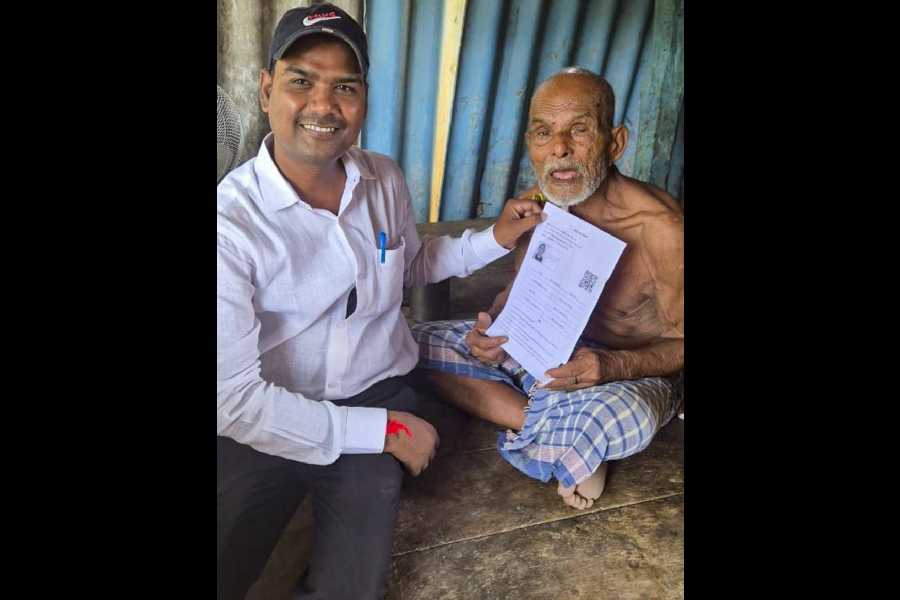Once eulogized as 'the mother of the nation', then denounced by some as an inveterate populist and a huge embarrassment to the party, Nomzamo Zanyiwe Winifred Madikizela-Mandela, in short Winnie Mandela, ex-wife of the former South African president, and currently president of the African National Congress Women's League, never fails to generate animated controversy, usually with a measure of drama.
On 19th October this year, she was arrested on 85 counts of fraud and theft involving more than $100,000 (about Rs 5,000,000). It was alleged that Madikizela-Mandela, together with her financial adviser, had struck a deal with a bank last year to obtain loans for 60 persons falsely claiming to be Women's League employees who secured loans from the bank. They are said to have used letters on the organization's official stationery confirming their employment, most of which were signed by Winnie. The authorities charged that $61,000 (about Rs 3,000,000) was subsequently deposited into Winnie Mandela's personal accounts.
Winnie was later released on bail for 5,000 Rand (Rs 25,000) and ordered to return to the court on November 20, when a date for her trial would be fixed. If convicted, she could face detention for 15 years or more. The old speculation was once again revived: is this the end of the political career of someone who was once a junior minister and is still an elected member of the South African parliament? The proverbial cat has nine lives; how many does Winnie have? As before, no one is sure, for, hasn't Winnie perfected the art of survival?
Winnie was born in 1936 in Pondoland, Transkei, now part of the Eastern Cape Province, of educated parents. She was one of the first black women in South Africa to study social work and be appointed a medical social worker. In 1957, she
met Nelson Mandela, then an attorney and an up-and-coming leader of the ANC. After a brief courtship, they married. In 1962, Nelson Mandela was arrested and sentenced to life imprisonment. He was later sent to Robben Island, South Africa's Andaman prison. He was released only
in 1990.
Undaunted, Winnie continued to work for the anti-apartheid struggle daring various restrictions imposed on her movements. Her role in the struggle after the 1976 Soweto uprising, when the South African government massacred hundreds of school children, was nothing short of glorious. She was jailed under the internal security act, and subsequently banished to Brandfort, in the Orange Free State, where she knew no one and did not even speak the local language.
But increasingly, since the mid-Eighties, Winnie's activities caused considerable embarrassment to her husband and to the ANC. She talked of ending apartheid by using 'necklaces', a popular euphemism for killing suspected collaborators by putting tyres round their necks and setting them alight. Also, the construction of a palatial house on which she is said to have spent £125,000 (about Rs 9,000,000) in one of the poorest areas in the country raised a storm. But the worst was yet to come.
In 1990 - on the allegation that she was involved in the killing of a 14-year old activist, Seipei Stompie Moketsie - Winnie received a suspended sentence. Moketsie was a member of the Mandela United Football Club, which comprised a group of Soweto youths serving as Winnie Mandela's bodyguards. Observers say that members of MUFC spent more time 'protecting' Winnie and engaging in other 'related' activities than playing football. These apparently involved eliminating anyone who opposed them. Her problems were compounded when several other anti-apartheid militants were said to have been killed on her orders.
In 1997, some of these cases were referred to the Truth and Reconciliation Commission for which Winnie testified. In all, more than 30 persons appeared before the commission, accusing her of organizing and participating in assault, abduction and murder. But Winnie was unruffled. A contemporary observer describes vividly how she arrived at the court, flamboyantly, in a different set of clothes every day, surrounded by her bodyguards.
The huge white Mercedes limousine that brought her had a licence plate which read 666 NWM GP. The letters stood for her name and her native Gauteng province, while the three digits, 666, reminded all of the anti-Christ in the Bible, summing up at once Winnie's ideological stance and defiance of the establishment.
Defiance of the prevailing establishment, which she thinks lacks legitimacy, seems to be Winnie's favourite pastime. During white rule, this meant ignoring banning orders, leading illegal marches, and openly flouting racial laws that meted out third class status to the overwhelming black majority. In liberated South Africa, she has repeatedly challenged the establishment, administered, ironically, by her former colleagues, including her ex-husband, Nelson Mandela, and now Thabo Mbeki, Nelson's successor and currently the country's president.
In doing this, she has rallied behind her thousands of poor blacks, to many of whom dismantling the apartheid structure is inordinately and unjustifiably delayed. Political differences with Mbeki seem now to have gone down to the personal level. Recently at a well-publicized rally on Youth Day, the president is said to have pushed her aside when Winnie, after a belated appearance on the scene, went to greet him with a kiss. Mbeki has also publicly called her a gossip for reportedly spreading rumours about his alleged extra-marital affairs.
Probably Winnie, more than any one else, symbolizes South Africa, with all its contradictions, its boom and bust. And just as there are two South Africas, hyphenated by the 1990 watershed when the apartheid structure was given a final push, similarly there are two Winnies: Winnie Mandela and Winnie Madikizela-Mandela. Winnie Mandela stands out as the fighting mother of the nation with her clenched fist raised in defiance of the South Africa of apartheid, her beautiful face radiating utopian promise to
millions. Then there is Winnie Madikizela-Mandela of the later days who flaunts her affluence to the frenzied ululation of her admirers, taking us to the new South Africa where, because of misplaced files and mislaid statements of key
witnesses, the authorities fail to take
action against her in face of overbearing evidence.
How did this happen? There must be a complex combination of factors accounting for this transition from hope to despair. But no one should forget that life has not been particularly kind to Winnie. When Nelson was sent to prison in 1962, Winnie - then 26 years old - was left to fend for herself and her two daughters, aged only 4 and 5. Of the 34 years of married life, the Mandelas lived together only for six years. The racist government did everything possible to break her. At one stage, she was subjected to 17 months solitary confinement under the suppression of communism act. At other times, she was arrested twice a day.
Harassed and tortured, Winnie was squarely brutalized by the apartheid system and partly, in consequence, transformed into a person who would, ruthlessly and cynically, try to crush all opposition to what she thinks is her own and her followers' entitlement. Disillusionment with the slow progress of the demolition of the old system and
increasing corruption at all levels extending even to some of yesteryear's heroes contributed to the disintegration of 'old-fashioned' ideas of morality and to the
triumphant march of crass consumerism - two conspicuous attributes of the
new South Africa as of many other
countries.
 Monday, 11 August 2025
Monday, 11 August 2025









